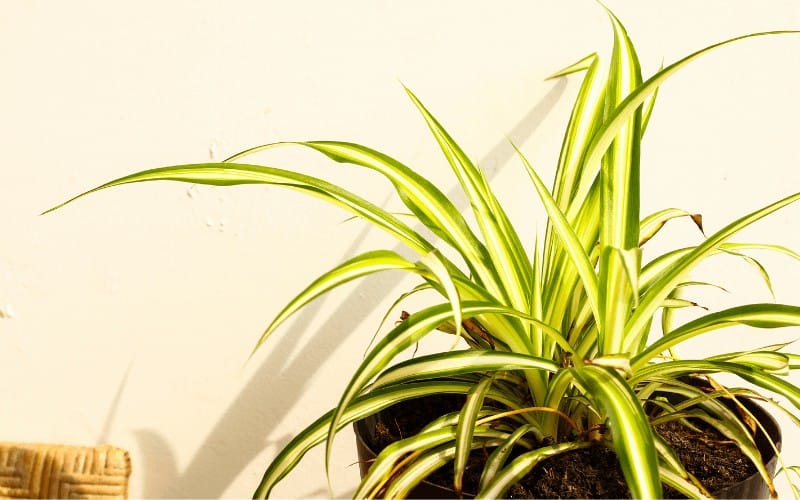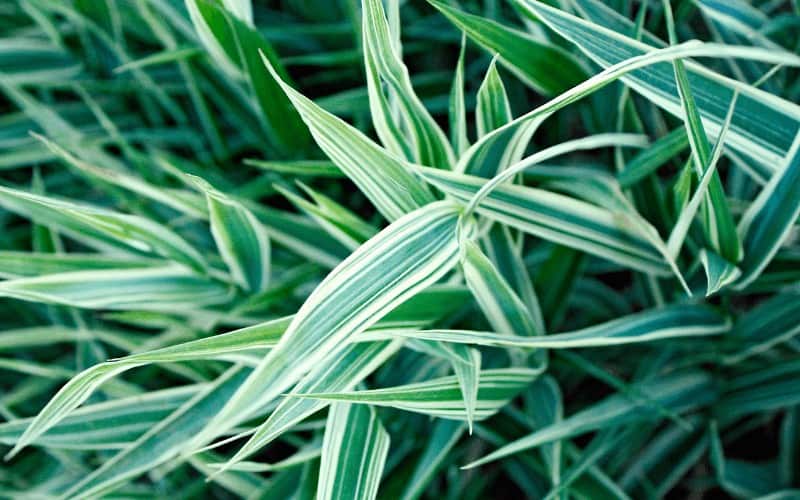Spider plants are quite popular houseplants. But what makes spider plants quite popular among gardeners?
Well, spider plants are relatively easy to care for. Some growers even claim that spider plants thrive better when they are neglected a bit.
What then causes the low-maintenance spider plant to wilt? Various reasons like overwatering, too much sunlight, and so on are part of the reason your spider plant is dying.
And if you've been looking for how to save a dying spider plant, we've got you covered. There are many ways to save a dying spider plant, which we'll discuss below.
But the first thing to do is to move the plant to a bright spot that gets indirect light and let the soil dry out before watering.
Now, how do you know that your spider plant is actually dying?
Table of Contents
Signs That Your Spider Plant Is Dying
Specific symptoms exhibited by your spider plants mean that the plant is stressed and dying. These signs are ways the spider plant is speaking to you, and you should take note of them and do the needful. They include:
- Poor growth
- Leaves turning yellow and brown.
- Bad smell in soil
- Leaves falling off
- Soggy soil
- Droopy foliage
If you notice any of these signs, then it means your plant is suffering. You need to take the necessary steps to save your plants from death.
Why is Your Spider Plant Dying?
Knowing the symptoms of a dying spider plant is very important. Once these symptoms are fully exhibited, it follows that you will need to do a bit of troubleshooting. Below are some of the reasons why your spider plant is dying.
Read Also: Overwatered Vs Underwatered Aloe
1. Water
Improper watering could lead to the death of your spider plant. Spider plants need a fair amount of watering during dry spells. But overwatering can also cause problems such as wilting and yellowing plants.
2. Light
Too much or too little light can also result in wilted spider plants. Spider plants do best in bright but indirect sunlight, like in a south-facing window or a space outside that receives less than 6 hours of sunlight.
3. No Fertilizer
If you are growing your spider plant in a pot or gallon bucket, the chances are that you high-quality potting soil with more than enough nutrients.
But if you are growing your spider plant in a garden, the garden soil may lack enough nutrients required for the plant's growth.
Inadequate fertilizer may cause droopy leaves. To remedy the situation, feed your spider plant with a balanced fertilizer every other week in the summer and less frequently in winter.
4. Re-potting
If your spider plant is overgrowing its container, you will need to re-pot the plant. Transplant the plant to a bigger pot or gallon bucket and water and feed it well.
How to Save A Dying Spider Plant
Spider plants have a unique look, with small little plantlets dangling on the ends of long stalks like spiders. The plants don't require much at all in the way of special care.
Irrespective of the plant's low-maintenance quality, various reasons may account for the plant dying, and you will have to take specific steps to revive the dying plant.
1. Stop Overwatering Your Spider Plant
Overwatering your spider plant may account for the plant dying. If you are also making the mistake of overwatering your spider plants, you should take quick actions to rectify it.
An overwatered spider plant will have yellow leaves that may soon start turning brown. Sometimes the over watered plant will attract bugs and pests, and in severe cases, the root of the plant will begin to rot.
To prevent overwatering your spider plant, make sure that the soil is not moist when watering. Also, make sure that the excess water drains out through drainage holes.
Learn to water your spider plant according to the season. For instance, the plant should be watered more in summer and less in winter.
2. Stop Underwatering Your Spider Plant
While spider plants are low maintenance, you will have to do the bare minimum in taking care of them. An underwatered spider plant will have dry and crisp foliage with brown leaves. The plant starts to look lifeless and will experience low growth.
Before watering your dry spider plants, it's best to clip any damaged part of the leaves of your spider plant. Water the plant and let the excess water drain out.
3. Make Sure Your Spider Plant is Getting Adequate Sunlight
Too much or too little sunlight may be affecting your spider plant adversely. The key is moderation. Spider plants don’t thrive under blasting sunlight or low sunlight.
Too much sunlight will cause the plant's leaves to wilt, while low light will weaken the stems and leaves.
Make your spider plant is not placed under direct sunlight for long hours, and in case of low light, you can use artificial lights, especially during the winter period.
4. Separate Your Infested Spider Plant from Non-infected ones
Pests like mealybugs, spider mites, scales, aphids, etc., can disturb your plant's growth and health. These pests may have sucked all the nutrients from your plant without your knowledge.
Some pest infestation signs on your spider plants include slow growth, speckled leaves, spotted foliage, and deformed leaves.
Once you notice these symptoms, immediately separate the infected plants from the non-infected ones. You can make a solution with neem oil and dish soap to 1-liter water. Spray this solution over the plant till the problem persists.
5. Get a Moderate Temperature for Your Plant
If the temperature in your region fluctuates, it may cause some difficulties to your spider plant. Fluctuating temperatures may cause shrunken and brown leaves.
Trim the damaged leaves and make sure your spider place has a temperature between 55°F to 85°F. Work with the weather; in colder months, move your plants to a warmer spot and vice versa.
Continue Reading:
- Overwatered Vs Underwatered Succulents
- How To Revive a Dying Jade Plant
- How to Save a Dying Citronella Plant
- How to Revive a Dying Cherry Tree
- How to Revive a Dying Oak Tree
- How To Revive A Dead Plant
Conclusion
Most beginners love spider plants in the gardening sphere due to their low-maintenance nature. Most pet owners adore the plant because it is not toxic to pets. More so, the plant can be used to beautify your household.
Just by taking out few hours in a day to care for your spider plant, you will notice a significant difference in the health of your plant.
You won’t need to inquire on how to save a dying spider plant once you provide the plant with adequate water, enough light, the right amount of fertilizer.






